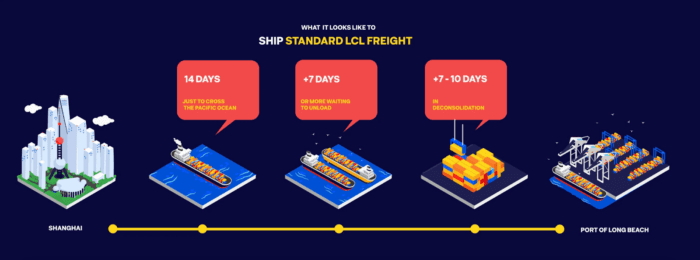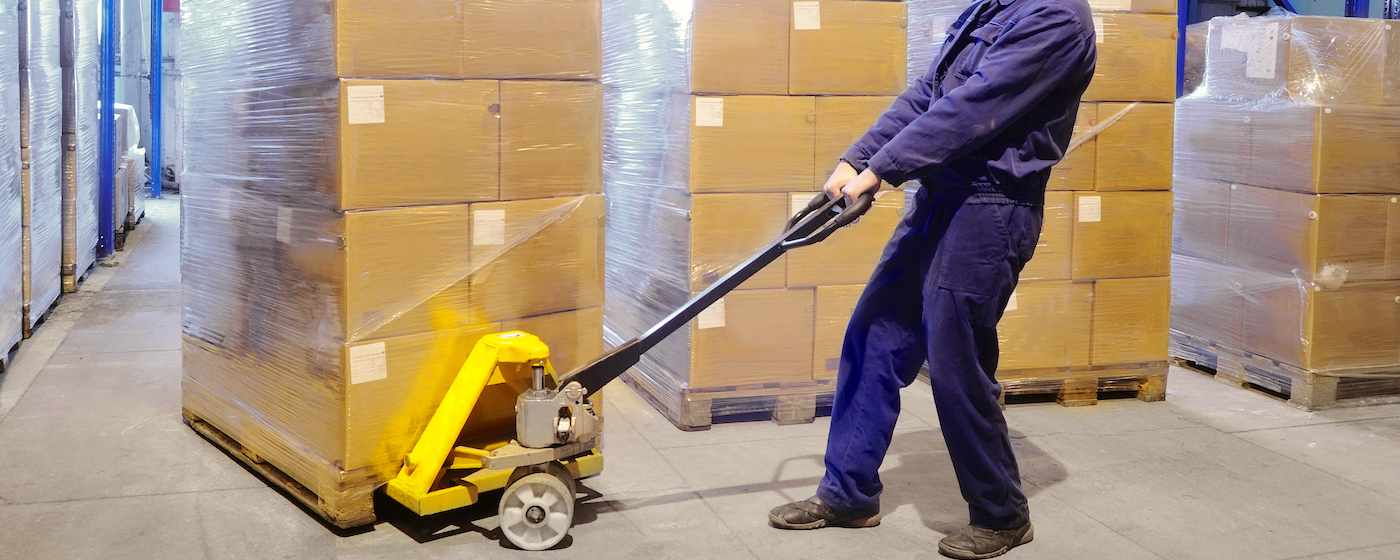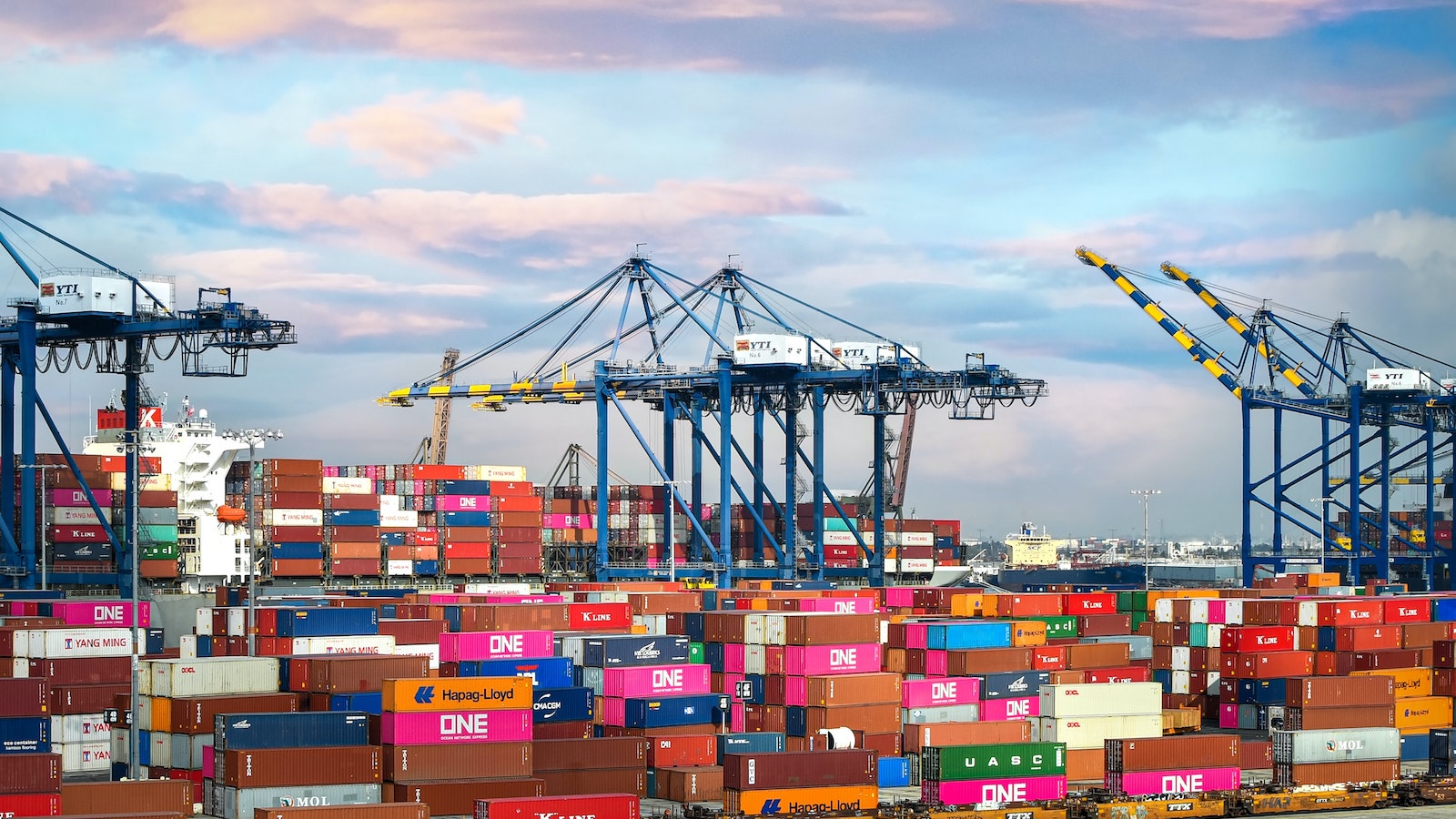Table of Contents
** Minutes
What is cargo loading and unloading?
Cargo loading and unloading procedures
Cargo loading/unloading challenges
Cargo loading/unloading best practices
How ShipBob helps ecommerce businesses with their fulfilment process
There are many steps involved between getting a product manufactured and then delivered to your customer.
One of those steps is the not-so-glamorous, but absolutely critical process of cargo loading and unloading.
It may not sound as exciting as landing page optimisation or marketing automation. However, understanding the ins and outs of cargo handling can revolutionize your ecommerce supply chain, reduce costs, and lead to a better customer experience.
What is cargo?
First off, let’s define cargo.
Cargo is essentially any goods that are transported, generally for commercial gain, by ship, aircraft, train, or truck.
There are many types of cargo including:
- Containerized goods that are packed in large standard-sized containers
- Bulk cargo like grains and coal that are carried loose
- Breakbulk cargo (individual items)
- Roll on/roll off (ro-ro) cargo which refers to vehicles that are driven on and off a ship
- Project cargo (think massive, oddly shaped stuff)
- Hazardous materials
It’s estimated that 11 billion metric tons of goods are transported by ship alone each year.
It’s safe to say that in 2023 and beyond, cargo is the lifeblood of commerce, enabling businesses around the world to get products into the hands of customers, wherever they may be.
What is cargo loading and unloading?
Cargo loading and unloading, often referred to as cargo handling, is essentially the process of getting your goods onto and off of transportation vehicles. Without this crucial step in the logistics chain, cargo would not be able to reach its intended destination.
Sounds easy enough, but cargo handling isn’t just as simple as walking up to a transport truck, collecting a few boxes, and leaving. It’s a finely tuned process of logistics, safety procedures, and coordination.
Additionally, land cargo, sea cargo, and air cargo each present their own unique challenges, requirements, and protocols.
- By land, you’re dealing with trucks or trains, ground handling service providers, and heavy equipment.
- By sea, you’re usually looking at massive freighters and communicating with seaport personnel to obtain proper permission to load and unload cargo.
- By air, it’s all about loading airliners like Boeing 747s using belt loaders or Unit Load Devices (ULDs) and liaising with airport cargo staff to ensure things progress smoothly.
Cargo loading and unloading procedures
When we get into the finer details of cargo loading and unloading, it can get a little complex. That being said, the whole warehouse receiving process typically includes four main components:
- Preparing and dispatching your inventory: Before shipping inventory to a warehouse, you need to plan quantities, the stowage factor, and specific packaging requirements with the shipper. To help with the load planning process, you can use a tool like SeaRates.
- Receiving and unloading stock: The next step involves receiving the shipment at a loading dock and unloading the cargo to be transported to a warehouse (known as drayage). Large or voluminous cargo might require heavy equipment like forklifts and pallet jacks for unloading.
- Verifying inventory: As cargo is unloaded, staff should check the contents of each delivery. This includes verifying quantity, labelling, product codes, and cargo condition to match the warehouse receiving order (WRO).
- Storing and documenting inventory: After unloading and inspecting, inventory must be organised and stored at a warehouse (also known as devanning).
Cargo loading/unloading challenges
Managing cargo handling is an intricate, potentially high-risk operation that demands specialized knowledge and significant resources.
Let’s talk about some of the challenges a growing business might face when planning to take on the logistics of cargo alone.
Health and safety risks
Loading and unloading cargo comes with inherent health and safety risks. Falling cargo is a common hazard that can lead to serious injuries. Improper use of heavy machinery, such as forklifts, cranes, and hoists, can also result in accidents.
Even seemingly little things like dim lighting can lead to slips, trips, and falls.
On top of all that, cargo handlers must be mindful of sharp edges, hot surfaces, and hazardous materials or residues.
Expenses
Cost is a significant challenge in cargo handling. We’re talking about expenses such as:
- Investing in machinery like forklifts and pallet jacks
- Leasing or buying warehouse space
- Hiring and training staff
- Maintaining all the equipment
Plus, there are ongoing operational costs, including utilities and insurance. It’s not a small line item on your budget — it’s a hefty expense that can impact your profit margins.
Shared warehouse space
If you’re a smaller company, you might not have the luxury of dedicated warehouse space. Instead, you might need to share a warehouse with other businesses.
While shared spaces can save you money, they also introduce potential complications. You could face inventory mix-ups and disputes over space and resources.
Hazardous material handling
While not all businesses will have to deal with hazardous materials, those that do face even greater challenges.
Shipping hazardous materials demands stringent handling protocols, specialized equipment, and extra safety measures. Mismanagement can lead to dangerous situations and potentially hefty fines or legal action.
Low-skilled labour
Labour is another major aspect of the cargo loading process. While some tasks may require skilled labour, many cargo handling roles are filled by low-skilled or unskilled workers.
This can create challenges around reliability and efficiency and lead to a higher risk of errors and accidents.
Cargo loading/unloading best practices
While there are plenty of challenges in the world of cargo handling, there are also established best practices that can help you navigate this tricky territory.
Be prepared
Being over-prepared is never a bad thing when it comes to cargo handling. To handle a high volume of cargo, you will need the right equipment, sufficient space, and enough personnel.
If not, your cargo could be left in limbo with nowhere to go due to a lack of resources. This is both costly and extremely inefficient.
Ensure good lighting
Good lighting in your cargo handling areas is crucial. It enhances safety by improving visibility and also increases efficiency, as workers can better see what they’re doing.
A few different types of lighting you should consider investing in include:
- Loading Dock Lighting ($150-$200 each): These are great for illuminating trailers or shipping containers from front to back, enhancing safety and efficiency during the unloading and loading procedures.
- LED High Bay Lights ($100-$250): Designed for high-ceiling areas, these provide strong illumination at a wide angle — perfect for open warehouse space.
- Linear High Bay Lights ($100-$175): Equipped with rows of LEDs, these lights are designed for even light distribution over more narrow areas, making them perfect for aisles.
Cleanliness is key
Maintaining cleanliness and order in your cargo handling areas isn’t just about aesthetics. A clean and well-organised workspace can significantly reduce the risk of accidents.
It can also improve efficiency by making it easier to locate and access goods. However, maintaining cleanliness requires resources, including cleaning staff and equipment.
Vehicle and machinery maintenance
Frequent and thorough maintenance of vehicles and machinery is essential. Regular checks and servicing can prevent breakdowns and prolong the lifespan of your equipment.
This can save you money in the long run and also prevent downtime caused by malfunctioning equipment.
Proper employee training
Without proper training, employees may not know how to handle different types of cargo. This can result in damage to the cargo, injury to the employees, or even accidents that can harm others.
By providing comprehensive training that covers everything from proper lifting techniques to the use of equipment, you’ll ensure your employees are well-equipped to handle any cargo they may encounter.
Consider outsourcing cargo loading
Outsourcing cargo loading to a specialized warehousing service or a third-party logistics (3PL) provider can have significant advantages such as:
- Enhanced efficiency
- Improved accuracy
- Reduced costs
- Greater flexibility and scalability
However, there are also potential cons, including:
- Loss of control
- Potential communication issues
- Dependency on a third-party provider
Overall, you need to evaluate if the pros outweigh the cons for your particular circumstance.
There’s never a one-size-fits-all answer, however, cargo handling does come with a set of complexities that require specialized skills, infrastructure, and experience.
How ShipBob helps ecommerce businesses with their fulfilment process
ShipBob offers an end-to-end managed freight shipping and inventory distribution solution called FreightBob. This service helps you:
- Reduce time-in-transit
- Lower freight costs
- And strategically distribute inventory
Typically, an LCL (Less-than-Container Load) shipment from China to Long Beach can take anywhere from 45-60 days — disrupting your ability to strategize inventory.

However, FreightBob has proven to be twice as fast as comparable LCL and FCL products with a transit time of just 15 days.

But it’s not just that, through partnering with ShipBob, you won’t have to worry about manually unloading inventory yourself.
All you need to do is have your supplier prepare your inventory and then create an WRO to let ShipBob know what is being sent to our fulfilment centre(s).
With ShipBob, you also gain access to an entire network of both domestic and international warehouses. Storing inventory in multiple warehouses allows for quicker delivery and isn’t something that many e-commerce brands can do on their own simply because of the costs involved.
By handling the inbound and outbound logistics of cargo handling, ShipBob allows businesses to focus on what they do best: creating and selling great products.
Cargo loading FAQs
Below are answers to the most common questions about cargo loading.
What does it mean to load cargo?
Loading cargo involves putting goods onto a transport vehicle, whether that’s a ship, plane, truck, or train. Once properly loaded, cargo then begins its journey to its final destination.
What are the challenges of cargo handling?
Cargo handling involves numerous challenges, from maintaining safety and managing costs to dealing with shared warehouse spaces, handling hazardous materials, and managing low-skilled labour.
What are the different types of cargo?
Cargo can take many forms, from containerized goods and bulk cargo to breakbulk, roll on/roll off cargo, project cargo, and hazardous materials.
How can ShipBob help with cargo loading?
ShipBob can take over your cargo handling responsibilities, offering services including unloading of goods, inventory audits, storage, inventory management, and more.



